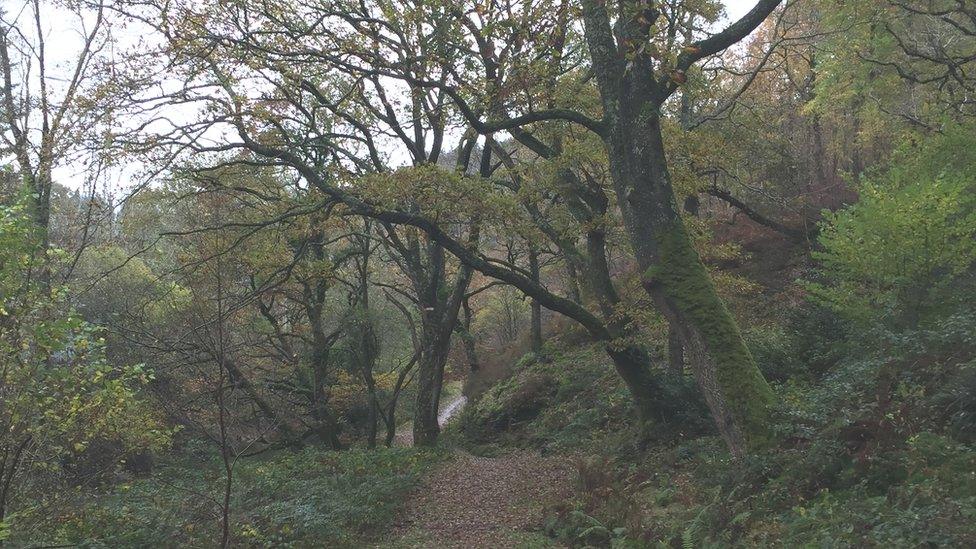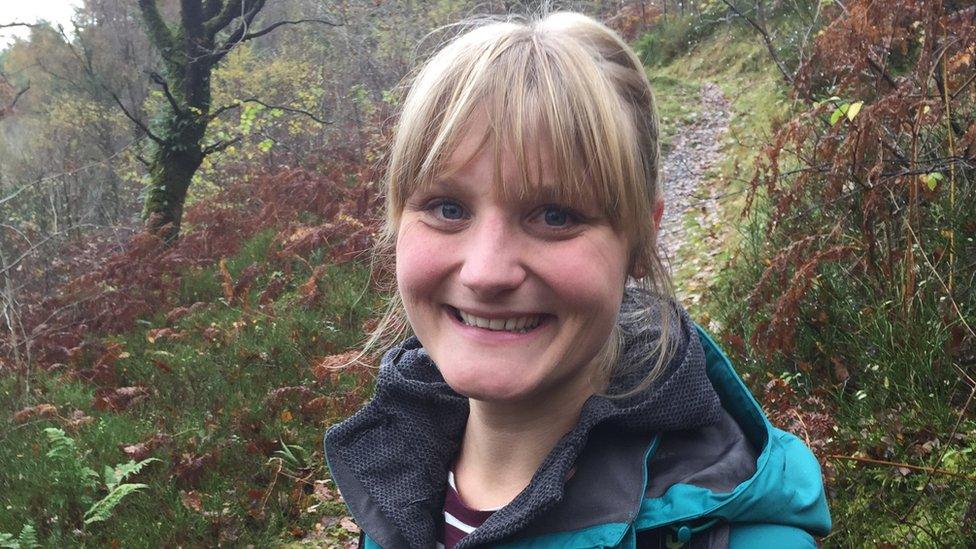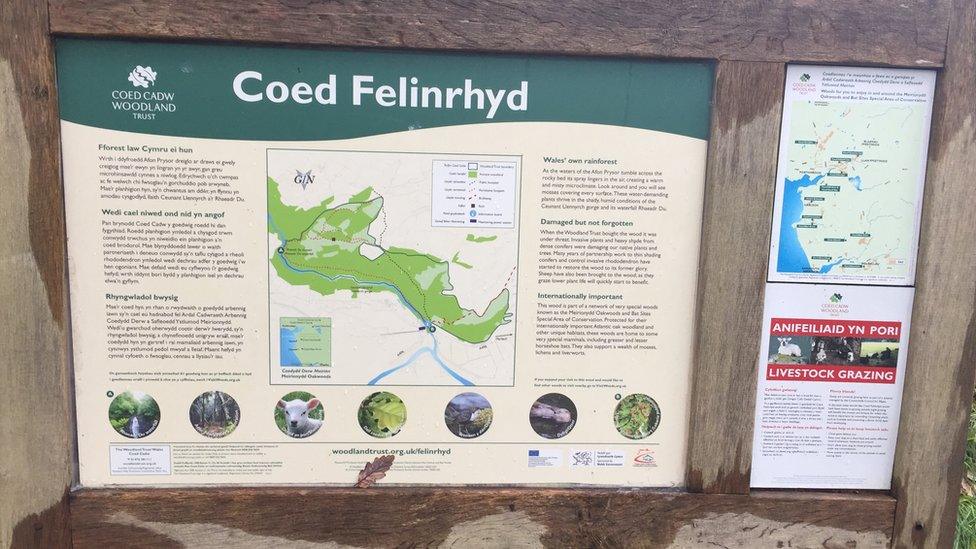Snowdonia Celtic rainforest's 'magical' new trail
- Published
The rainforest is in a sheltered gorge protected from frost and wind
There may not be monkeys swinging from the canopy - but Snowdonia's 10,000-year-old Celtic rainforest shares other links to its Amazonian cousins.
Coed Felinrhyd is a place where geography and legend meet, and was named in the 12th Century Mabinogion Welsh myths.
Much of the woodland dates from the last Ice Age.
Now the Royal Geographical Society (RGS) has created a trail through one of the UK's "most magical" ecosystems.
Hidden off a lay-by near the picturesque village of Maentwrog, this 221-acre pristine woodland is home to flora and fauna scarcely seen elsewhere, including otters, bats, and rare birds.

The rainforest is in a sheltered gorge protected from frost and wind
"You'd associate most rainforest with central or south America - but this wood has a lot of similar processes going on," explains Jo Kemp, project officer with the RGS's Discovering Britain, external project.
The wood's sheltered gorge setting, together with the streams and waterfalls that cross the landscape, have created an ecosystem where plant life thrives.
"There's an oak tree canopy which maintains the moist humidity you can really feel here, and it remains sheltered from the hard frosts of Snowdonia and the strong winds of the coastline," Jo says.
"There are elements of this wood that potentially remain untouched since the last Ice Age, 10,000 years ago - which makes it particularly unique not only in Wales, but in the whole of Britain."
'Ancient'
As soon as you enter the rainforest, it immediately looks different to any other Welsh woodland.
The oak at the walk's entrance is covered in tree lungwort, a lichen now limited to only a few wild areas of Britain.
"It only likes less acidic bark," Jo explains. "As oak trees get older, their bark becomes less acidic.
"So its presence tells us that this bit of woodland is quite special and particularly ancient."
A rare Ice Age species of lichen was identified in Wales for the first time at Coed Felinrhyd in 2015, evidence that the forest dates back to a time when trees first re-colonised the country.
As we move further through the woodland, Jo points out the filmy fern plant growing from a tree base. "It's just one cell thick - and it's really quite scarce," she says.
"The fact it is here demonstrates just how unique an environment this is.
"It also shows us how all the small bits of life interlink to create a truly ancient and complex woodland."
The forest's age is reflected by its special place in Welsh folk history.
According to the Mabinogion myths, it was the place where two great leaders fought to the death and where the body of one lies in an unmarked grave.

Jo Kemp of the Royal Geographical Society says the wood needs to be preserved for future generations
Yet the forest - bought by the Woodland Trust in 2015 - was, until recently, endangered by aggressive species of rhododendron and conifers.
But a process of "halo thinning", where trees are cleared to allow native species to enjoy a "halo" of light and space, has seen positive results.
In some areas of the forest, walkers can see how the oak woodland is slowly taking back land once planted with conifers.
"The Woodland Trust are trying to preserve and re-energise the ancient woodland, so we can build these habitats back up," Jo explains.

The wood is little visited - despite being in Snowdonia
The RGS's £500,000 Discovering Britain project has been set up to "shine a light" on hidden corners of wild Britain like Coed Felinrhyd.
The project has created a new guided 2.5 mile (4 km) trail round the rainforest.
It is one of 26 long walks, trails, viewpoints and aerial views created by the RGS in Wales.
Director of the Royal Geographical Society, Dr Rita Gardner CBE, said: "Through this trail, we hope to encourage people to explore this magical rainforest, left nearly untouched by human hands."